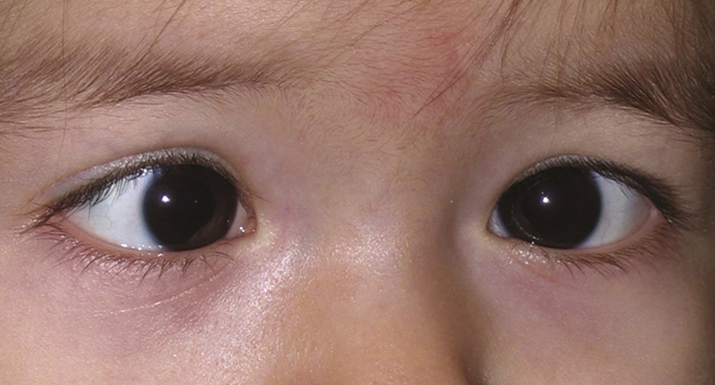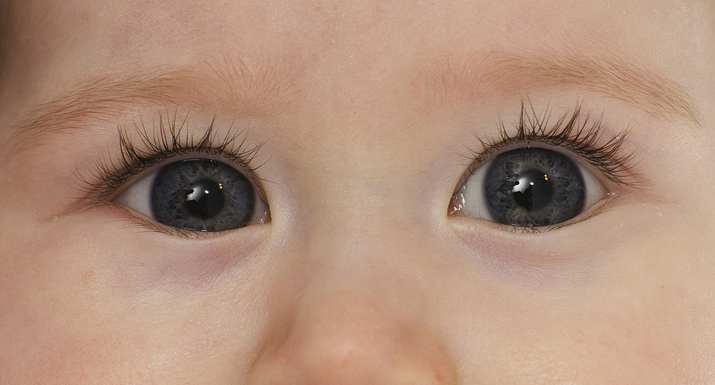In all cases, correct refractive errors of +2.00 diopters or more. In children, treat any underlying amblyopia (see 8.7, AMBLYOPIA).
- Congenital esotropia: Almost always requires strabismus surgery. However, prescribe glasses and initiate treatment of any underlying amblyopia prior to surgical intervention as appropriate.
- Accommodative esotropia: Glasses must be worn full time.
- If the patient is <6 years old, correct the hyperopia with the full cycloplegic refraction.
- If the patient is >6 years old, attempts should be made to give as close to the full-plus refraction as possible, knowing that some may not tolerate the full prescription. Attempts to push plus lenses during the manifest (noncycloplegic) refraction until distance vision blurs may be tried to give the most plus lenses without blurring distance vision. The goal of refractive correction should be straight alignment without sacrificing visual acuity.
- If the patient’s eyes are straight at distance with full correction, but still esotropic at near fixation (high AC/A ratio), treatment options include the following:
- Bifocals (flat-top or executive type) +2.50 or +3.00 diopter add, with top of the bifocal at the lower pupillary border.
- Echothiophate (phospholine iodide) eyedrops in both eyes nightly.
- Extraocular muscle surgery targeting the near deviation only may be indicated. This typically requires posterior fixation sutures to the muscle to modify the surgical effect for near only.
- Wearing full-plus distance glasses only.
- Nonaccommodative, partially accommodative, or decompensated accommodative esotropia: Muscle surgery is usually performed to correct the nonaccommodative deviation or the significant residual esotropia that remains when glasses are worn.
- Sensory-deprivation esotropia.
- Attempt to identify and correct the cause of poor vision.
- Amblyopia treatment.
- Give the full cycloplegic correction (in fixing eye) if the patient is <6 years of age, otherwise give as much plus as tolerated during manifest refraction.
- Muscle surgery to correct the manifest esotropia.
- All patients with low vision in one eye need to wear protective polycarbonate lens glasses at all times.
 NOTE: NOTE: |
There is no universal agreement on the treatment of patients with excess crossing at near only. |
At each visit, evaluate for amblyopia and measure the degree of deviation with prisms (with glasses worn).
- If amblyopia is present, see 8.7, AMBLYOPIA, for management.
- In the absence of amblyopia, the child is reevaluated in 3 to 6 weeks after a new prescription is given. If no changes are made and the eyes are straight, the patient should be followed up several times a year when young, decreasing to annually when stable.
- When a residual esotropia is present while the patient wears glasses, an attempt is made to add more plus power to the current prescription. Children <6 years old should receive a new cycloplegic refraction; plus lenses are pushed without cycloplegia in older children. The maximal additional plus lens that does not blur distance vision is prescribed. If the eyes cannot be straightened with more plus power, then a decompensated accommodative esotropia has developed (see above in Section 8.4, Comitant OR Concomitant Esotropic Deviations).
Hyperopia often decreases slowly after age 5 to 7 years of age, and the strength of the glasses may need to be reduced so as not to blur distance vision. If the strength of the glasses must be reduced to improve visual acuity and the esotropia returns, then this is a decompensated accommodative esotropia.

